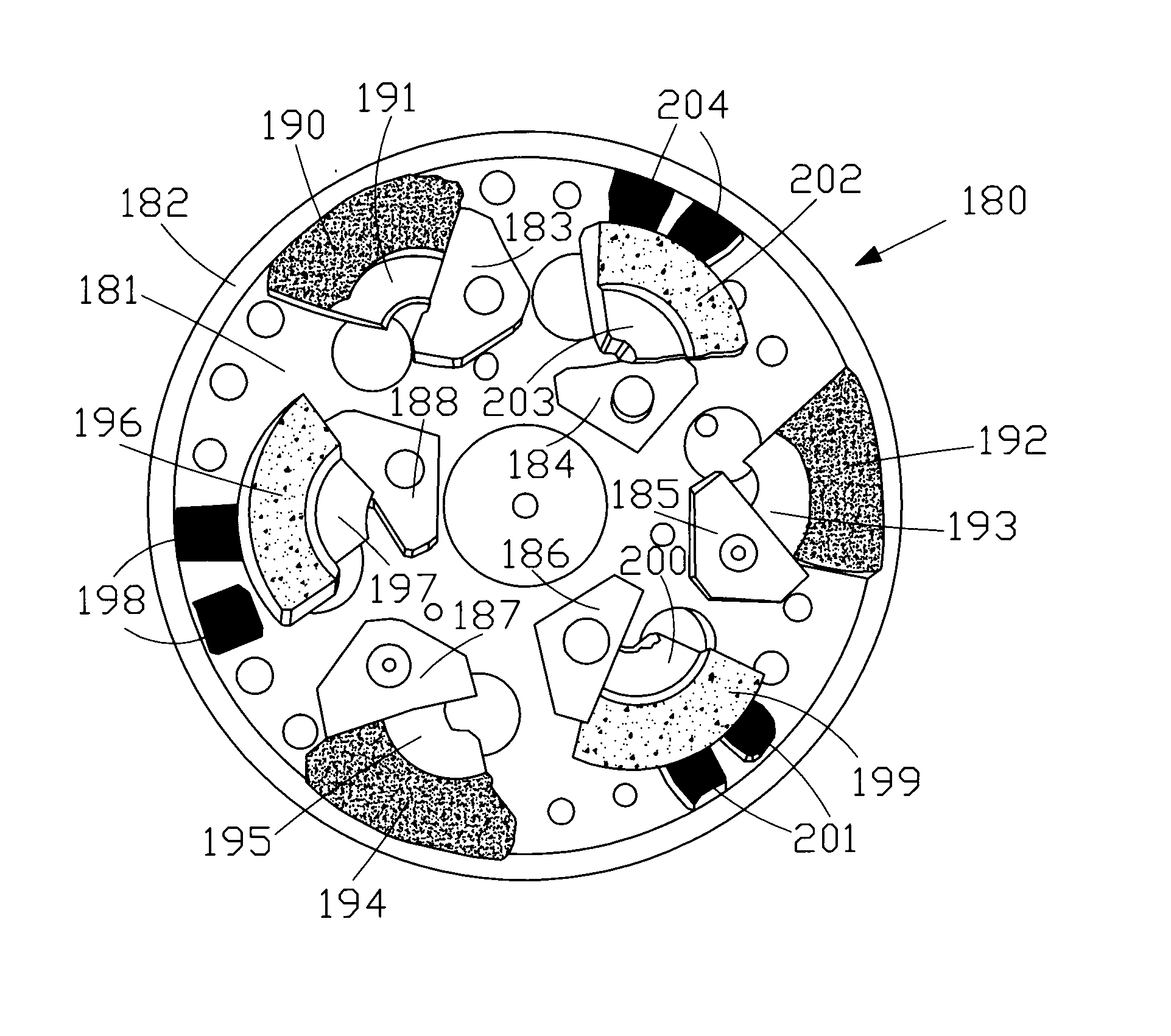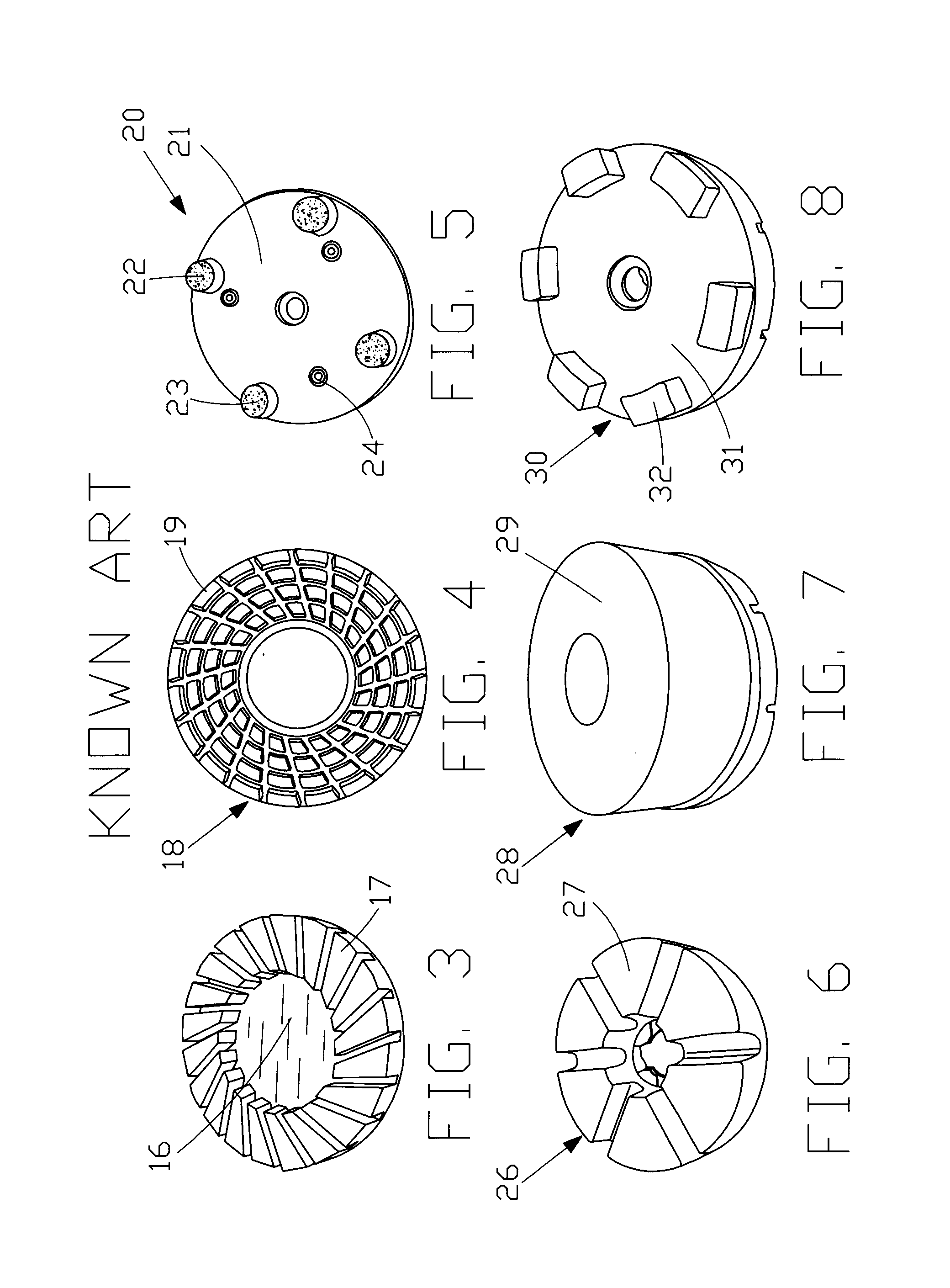Multi-abrasive tool
a multi-abrasive and tool technology, applied in the field of manufacturing abrasives, can solve the problems of reducing the removal efficiency, affecting the quality of the surface finish, and the friction developed by the abrasion also produces a lot of heat, so as to achieve the complexity of the abrasive tool, reduce the number, and the effect of increasing the complexity
- Summary
- Abstract
- Description
- Claims
- Application Information
AI Technical Summary
Benefits of technology
Problems solved by technology
Method used
Image
Examples
Embodiment Construction
[0066]In the following description, equivalent elements which appear in different figures can be indicated with the same symbols. In the illustration of one figure, it is possible to make reference to elements not expressly indicated in that figure but in preceding figures. The scale and the proportions of the various depicted elements do not necessarily correspond with the actual scale and proportions.
[0067]FIG. 17 shows an abrasive tool 50 constituted by a centrally-perforated discoid support 51, made of material suitable for the type of abrasive material employed and for the technique used for fixing the abrasive powder. If the tool 50 is a diamond tool, the support 51 could be, for example: brass, aluminum, resinoid material, vegetable or artificial fiber, etc. On the support 51, the abrasive powder, starting from the external edge, forms ten concentric circular rings 52-61 of equal width, contiguous to each other, made of different size grains. The finest grain is present on th...
PUM
 Login to View More
Login to View More Abstract
Description
Claims
Application Information
 Login to View More
Login to View More - R&D
- Intellectual Property
- Life Sciences
- Materials
- Tech Scout
- Unparalleled Data Quality
- Higher Quality Content
- 60% Fewer Hallucinations
Browse by: Latest US Patents, China's latest patents, Technical Efficacy Thesaurus, Application Domain, Technology Topic, Popular Technical Reports.
© 2025 PatSnap. All rights reserved.Legal|Privacy policy|Modern Slavery Act Transparency Statement|Sitemap|About US| Contact US: help@patsnap.com



